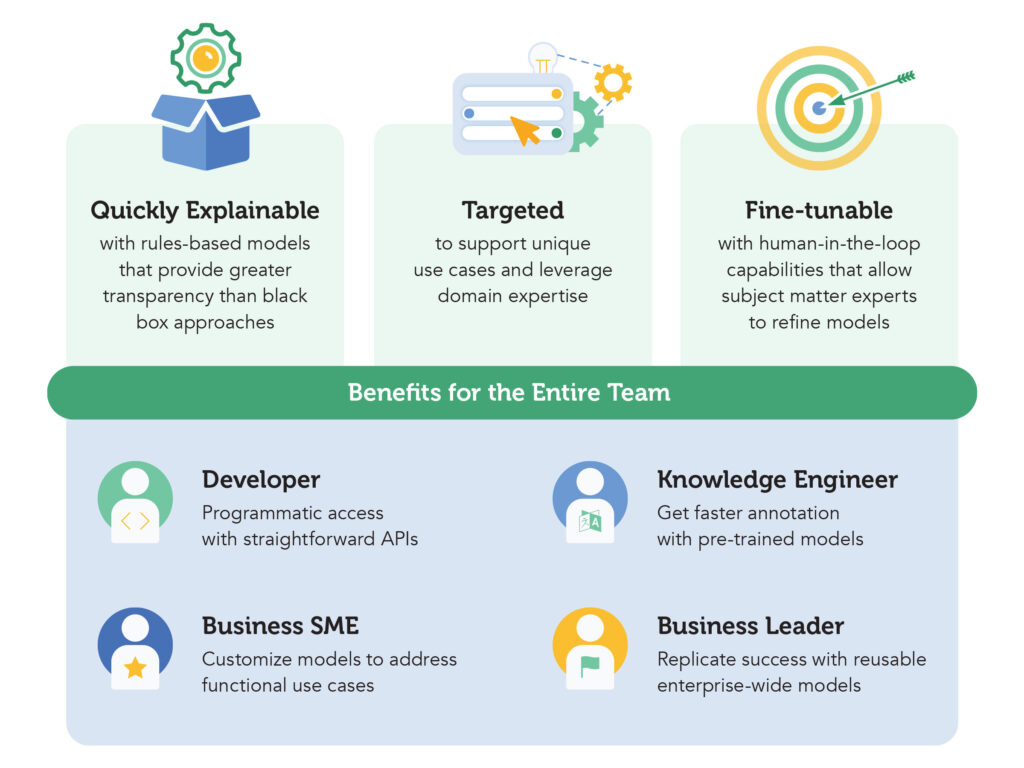Smarter from the start with domain-specific context on the expert.ai Platform
Language is hard. Making sense of industry-specific jargon or company-specific product terminology and extracting additional insight at speed and scale is even harder. Until now.
With 300+ deployments of natural language solutions, expert.ai has developed deep domain expertise in insurance, technology, financial services, and media. The expert.ai Platform includes generative AI Enterprise Language Models and Knowledge Models which capitalize on that expertise with rules-based models that contain industry, role, or use case specific concepts and relationships that can be used out-of-the-box to quickly improve the accuracy of natural language results and surface new insights from unstructured data.
Make a project ‘smart from the start’ and provide every team member with intuitive and easy-to-use workflows and value that accelerate the development of custom and explainable natural language solutions.

Build Natural Language Projects Faster
Enterprise Language Models and Knowledge Models leverage out-of-the-box domain knowledge that provides a head start for building custom NLP solutions with the expert.ai Platform. Classify documents and extract relevant data for domain specific use cases with a high level of accuracy and explainability thanks to expert.ai’s hybrid approach.
Below is a sample list of currently available expert.ai Knowledge Models. New Knowledge Models are added everyday. Please contact us if you do not see a knowledge model you need to complete you natural language project.